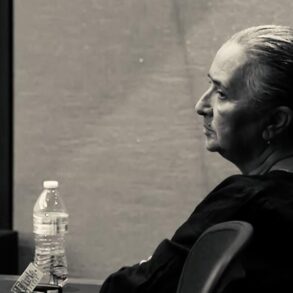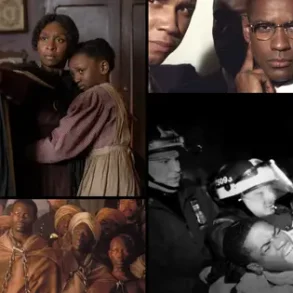We’ve been living in the age of mass incarceration for more than half a century now. In the past decade or so, works like Michelle Alexander’s “The New Jim Crow” have opened Americans’ eyes to the scale and ravages of a penal system that disproportionately punishes Black men. We now understand the major forces that drove the population in state and federal prisons to reach a peak of more than 1.6 million in 2009 (it fell to just over 1.2 million by 2021), including the tough-on-crime policies of the 1970s, the war on drugs of the 1980s and ’90s, and the harsher sentencing laws that accompanied both.
We focus less on what happens to people once they are in prison, or how they might someday leave. One way to freedom is parole, the term for both the process of assessing an incarcerated person for conditional release before the end of their sentence and the state of being supervised after release. In 2020, there were more than 860,000 people on parole — more than four times the number of people who were in prison in 1973.
As journalist Ben Austen’s “Correction” attests, parole is a process full of its own inequities and injustices, raising existential questions about what incarceration is supposed to accomplish and how much punishment and rehabilitation a person must undergo after committing a crime. Parole is also, as Austen writes, “central to a correction, to a change in the country’s values.” His book is a critical contribution to discussions of how to reform American criminal justice, illuminating how we might change the process of giving people second chances and re-envision the very purpose of our carceral system.
Austen constructs his investigation around intimate portraits of Johnnie Veal and Michael Henderson, two Black men convicted of murder as teenagers in 1970s Illinois. Each was sentenced to 100 to 199 years with the possibility of parole. Veal’s imprisonment formed a footnote in Austen’s first book, “High-Risers: Cabrini-Green and the Fate of American Public Housing,” which focused on the infamous Chicago housing project. Veal was found guilty as an accomplice to the 1970 murders of two police officers, a killing that forever changed Cabrini-Green; he has always maintained his innocence. Meanwhile, Austen met Henderson through the Chicago lawyer Sara Garber, who represented Veal at parole hearings. Unlike Veal, Henderson acknowledges his guilt in the 1971 murder of a White teenager in East St. Louis. Like Veal, Henderson had been incarcerated for more than 40 years and denied parole several times when Austen met him.
Austen interviewed his two main subjects more than 100 times. His extraordinary access allows him to present them in their full humanity — a vital factor in a book that argues that violent criminals, who make up the majority of the incarcerated and have been left out of recent prison reforms, deserve more thorough consideration for release.
“Correction” traces the rise and fall of indeterminate sentencing — minimum and maximum ranges, like those given to Veal and Henderson — a practice originally adopted in 1870 as a means of acknowledging that a judge or prosecutor could not predetermine when a person would be sufficiently reformed. Indeterminate sentencing went hand-in-hand with discretionary parole, designed “to continually evaluate people in prison, to encourage their pro-social behavior,” Austen writes.
By the time Veal and Henderson entered prison a century later, it was clear that the promises of indeterminate sentencing and discretionary parole had failed to materialize. People in prisons across the country, from Attica to Folsom, rose up to demand better conditions, including an end to parole, which had proved a highly corruptible process. “The finish line of a sentence could be moved again and again as a way to discriminate against or punish racial minorities, political activists, women, or anyone deemed different or unsavory,” Austen writes. Indeterminate sentences, meanwhile, had ballooned to “fantastical ranges” as judges sought to reassert their power.
In the mid-1970s, states began to abolish discretionary parole for most crimes; the federal government did away with the practice in 1987. Around the same time, the country established mandatory minimum sentences for specific crimes. But the criminal legal system wasn’t responding to the demands of prison uprisings; lawmakers were motivated by the political popularity of tough-on-crime rhetoric and the mistaken idea that ever-harsher punishments would deter crime.
Since Veal and Henderson were convicted before Illinois abolished parole, they were still eligible to be considered for release. Crucially, Austen connects how changes in the country’s philosophies toward and narratives of crime and punishment affect people already serving time and their odds of being granted a second chance. One chapter illustrates this with snippets of letters that the Illinois Prisoner Review Board sent to Henderson over the years explaining why he had been denied parole.
But despite the fact that Veal and Henderson served time at the same time, Austen chooses to tell their stories in different directions. The book begins with Veal’s November 2020 parole hearing; it’s not until a third of the way through that we turn back to the beginning of his sentence. Austen alternates Veal’s story with Henderson’s, which he relates chronologically. Each chapter contextualizes the men’s experiences against the backdrop of the larger penal system. The structure makes for an elliptical and sometimes disorienting timeline, returning to key time periods, like the 1970s, again and again.
Structural qualms aside, “Correction” provides a revelatory lens for examining mass incarceration. As Austen writes, “Parole conveys the story of the country in all its fevered conceptions of safety and punishment.” Especially effective at demonstrating this are scenes of parole hearings, where board members — civilians appointed by a state’s governor — seem forever tempted to retry the original case. Unless the candidate can counter the story of the crime with a story of how they’d transformed since, “the board members turned back to the original offense, which never stopped being heinous and forever disrespected the law,” Austen writes. The tendency of parole boards to get hung up on the crime, which cannot be changed, at the expense of considering the person who committed the crime, who can change, mirrors, Austen says, the system as a whole. By locking up violent criminals for decades without a clear rationale for what imprisonment is meant to do besides enact vengeance, we stay stuck forever in the past.
“Correction” makes a compelling case that expanding access to parole — a subjective means of determining freedom that nevertheless offers people in prison “an opportunity to literally be seen and heard” and for the public to “contend with their humanity” — can help us move forward.
Kristen Martin is a cultural critic based in Philadelphia. Her debut narrative nonfiction book, “The Sun Won’t Come Out Tomorrow,” is forthcoming from Bold Type Books.
Correction
Parole, Prison, and the Possibility of Change
By Ben Austen
Flatiron. 323 pp. $29.99
This post was originally published on this site be sure to check out more of their content.






